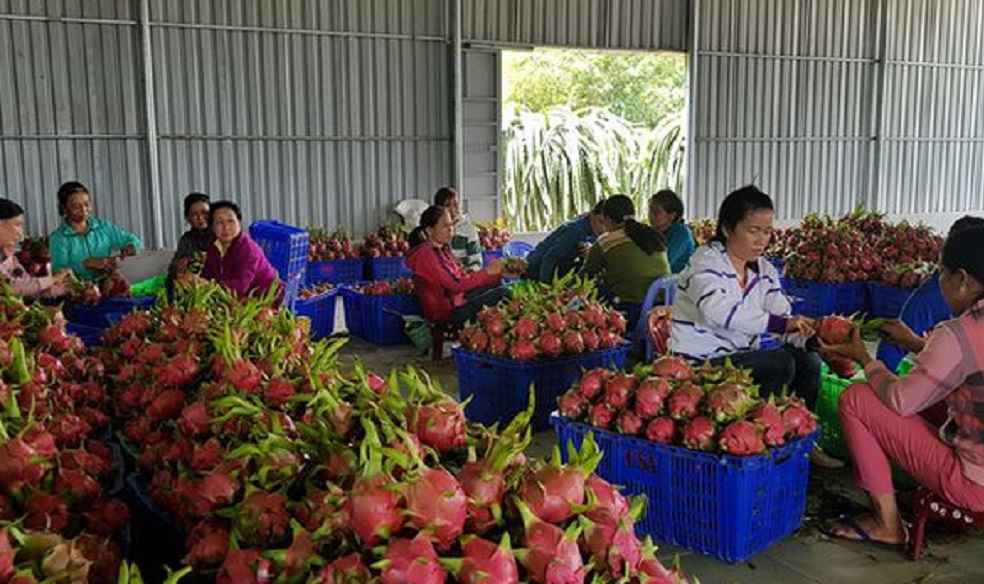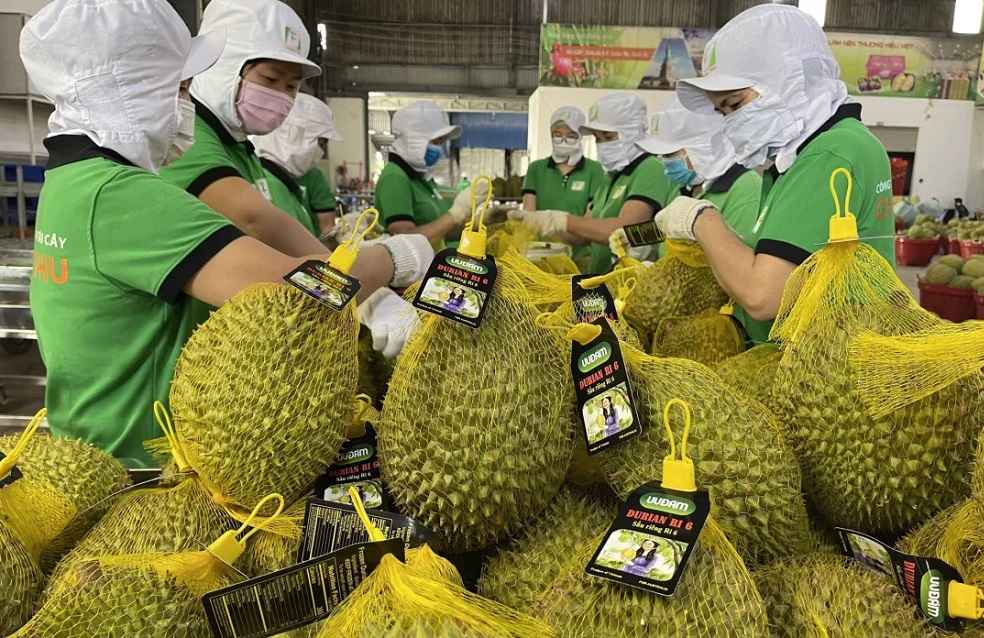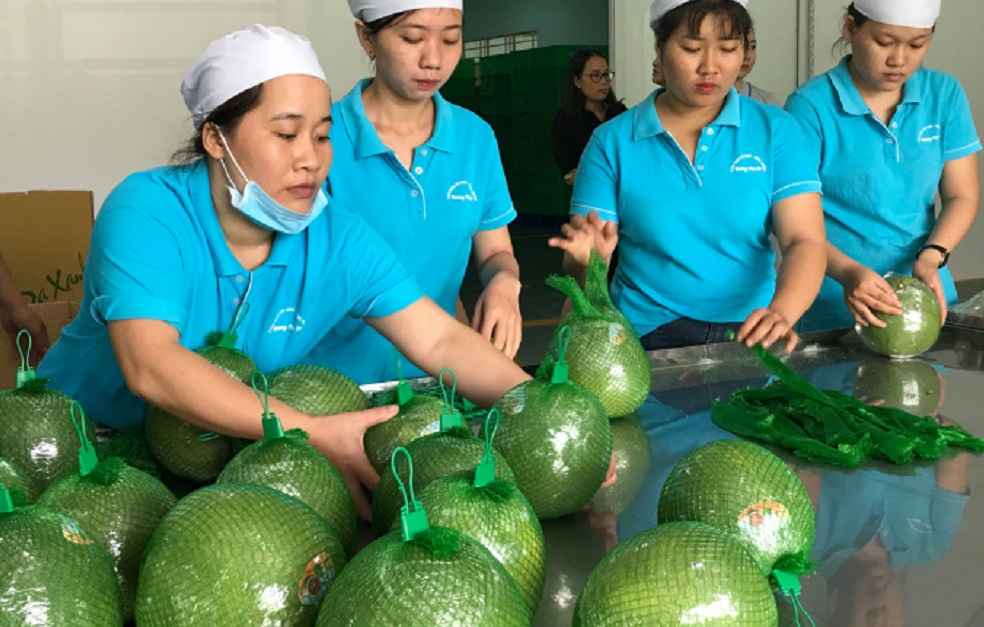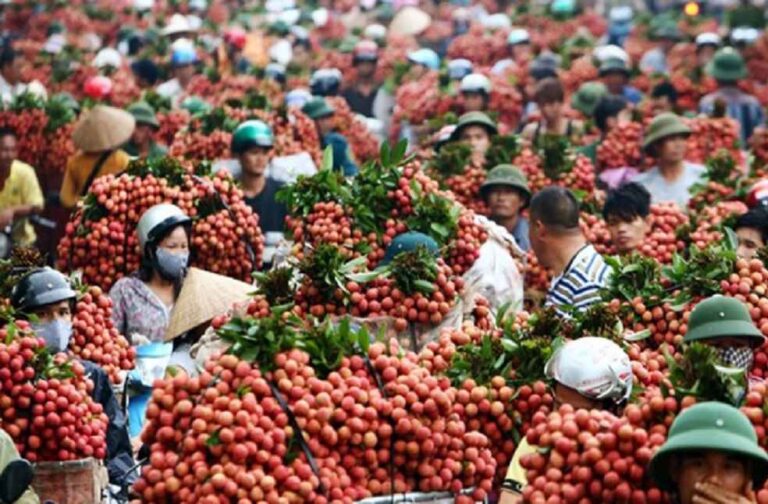Vietnam’s vibrant hues of tropical fruits are finding a sweet spot across the border with China, painting a fruitful picture of bilateral trade dynamics. China has emerged as the most prominent market for Vietnamese fruits and vegetables, accounting for a whopping 65% of the total export value in this sector, as reported by Đặng Phúc Nguyên, the general secretary of the VietNam Fruit and Vegetable Association.
Vietnam, rich in an array of tropical fruits like durian, jackfruit, and dragon fruit, has been fervently expanding its fruit exports, with anticipations of gaining official export permissions to further penetrate the Chinese market by year-end. The delectable offerings from Vietnam have notably carved a niche among Chinese consumers, with demand forecasted to spike, especially during the holiday season.
The past year witnessed the signing of impactful protocols between Vietnam and China, fostering optimism among Vietnamese exporters and providing a robust foundation to amplify fruit and vegetable export activities. Deputy Minister of Agriculture and Rural Development, Phùng Đức Tiến, expressed aspirations of widening the export spectrum to include an array of other agricultural produce.

The narrative of watermelons was spotlighted, being traditionally exported via border gates. The newly signed protocols aim to address and mitigate past export challenges, paving a fertile path for escalating watermelon exports.
As the year progresses towards its last quarter, the Ministry of Industry and Trade (MoIT) of Vietnam envisions sustained growth in the export of various fruit and vegetable products to China. However, a slight decline is projected for dragon fruit and mango exports due to China’s increased domestic supply.
The potential for augmenting agricultural exports to China resonates well with the stringent quality demands of the Chinese market. The upward trajectory in exports aligns with the World Bank’s projections of China’s economic ascent to 5.6% in 2023.

Experts accentuate the necessity for stringent fruit quality control and adherence to China’s coded area and enterprise regulations to ensure enduring growth in fruit exports. Deputy Minister Hoàng Trung highlighted the need for intensifying inspections, disseminating Chinese regulations, and offering clear guidance for Vietnamese producers and exporters.
The first eight months of 2023 marked a substantial upswing in the export value of fruits and vegetables, reaching a notable $3.45 billion, a surge of 57.5% compared to the same period in the preceding year, as reported by the Financial Times’ Thời báo Tài chính.
Durian took the lead among the exported fruits with a 35% share, followed by dragon fruit, bananas, mango, and jackfruit, aptly fulfilling China’s growing appetite for these tropical delicacies. Customs data revealed a significant uptick in China’s durian imports, predominantly supplied by Thailand, Vietnam, and the Philippines.

This enriching trade narrative extends further as the aggregate export value of agricultural, forestry, and fishery products soared to $33.21 billion within the same eight-month span. China’s contribution stood at $7.28 billion, a 9.8% rise from 2022, making up 22% of the total export value.
Agricultural commodities are a major pillar of Vietnam’s export economy, significantly contributing to the nation’s total export revenue.
The recent authorization for exporting passion fruit and durian to China has been warmly welcomed by a wide array of Vietnamese farmers and business establishments. While this opening to the world’s most populous market presents a lucrative opportunity, the quality of products emerges as a critical success factor.
Vietnam’s venture of exporting fruits and vegetables to the Chinese market is met with several hurdles. These include technical barriers, extended risk evaluation processes, restrictions on the commodities exported through official quotas to the Chinese market, and inconsistent alterations in China’s border control policies.

China’s stature as Vietnam’s pre-eminent market and trade partner is brightly illuminated with remarkable export percentages in key Vietnamese agricultural products. This unfolding narrative of cross-border fruit trade is a testament to a booming economic rapport, potentially heralding an era of growth and prosperity for both nations within the flourishing domain of trade and commerce.
DON’T MISS IT | Vietnamese Firms Eye Indian Market at Inaugural UP Trade Show



